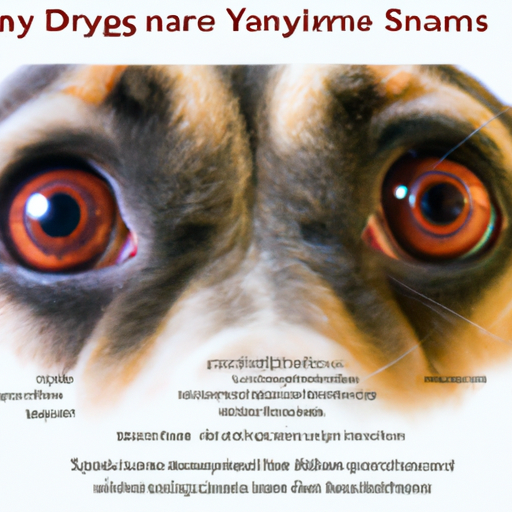Understanding the Canine Eye
Your dog’s eyes are more than just a window to their soul. They are a complex organ capable of much more than you might imagine. The dilation and constriction of your dog’s pupils serve as a communication method for their emotional and physical state.
- Healthy pupil dilation: In a healthy dog, the pupils will dilate (get larger) in low light conditions to allow more light to enter the eye. Conversely, in bright light, the pupils constrict (get smaller) to protect the retina from potential damage.
- Emotional responses: Just like humans, dogs’ pupils can also dilate in response to emotional stimuli. For example, when your dog is excited or scared, their pupils may dilate.
- Health issues: Abnormal or excessive pupil dilation can be a sign of certain health issues, such as trauma, neurological disorders, or certain medications.
The Science Behind Pupil Dilation
When it comes to understanding why your dog’s pupils dilate, it’s important to take a look at the science behind it. The size of the pupils is controlled by two groups of muscles in the iris:
- Sphincter pupillae: These muscles are responsible for constricting the pupil.
- Dilator pupillae: These muscles, on the other hand, cause the pupil to dilate.
The balance between these two muscle groups, influenced by the autonomic nervous system, determines the size of your dog’s pupils at any given time.
| Muscle Group | Function |
|---|---|
| Sphincter pupillae | Constricts the pupil |
| Dilator pupillae | Dilates the pupil |
Observing Your Dog’s Pupil Dilation
Observing your dog’s pupil dilation can give you insight into their emotional and physical state. Remember, you know your dog best, so if you notice anything unusual or out of character, it might be a sign of an underlying health issue.
- Excitement or Fear: You might notice your dog’s pupils dilating when they’re excited, anxious, or scared.
- Health Issues: If your dog’s pupils are constantly dilated, or if the dilation is accompanied by other symptoms like clumsiness or disorientation, it’s time to seek veterinary help.
Responding to Abnormal Pupil Dilation
As a caregiver, it’s crucial that you respond appropriately to abnormal pupil dilation in your dog. If you notice any of the following, make sure to consult with your vet:
- One pupil is larger than the other.
- Your dog’s pupils are dilated in bright light.
- The pupils remain dilated even in the absence of emotional stimuli.
- Your dog is showing signs of distress, discomfort, or neurological symptoms.
Frequently Asked Questions
Q: Is it normal for my dog’s eyes to dilate in the dark?
A: Yes, it is normal for a dog’s eyes to dilate in low light conditions. This allows them to see better in the dark.
Q: Why are my dog’s pupils dilated all the time?
A: Constantly dilated pupils can be a sign of a health issue. If you notice this in your dog, it’s best to consult with a vet.
Q: Can emotions cause my dog’s eyes to dilate?
A: Yes, emotions such as excitement, fear, or anxiety can cause your dog’s pupils to dilate.
Q: What should I do if my dog’s pupils are different sizes?
A: If your dog’s pupils are different sizes, it’s important to seek veterinary help as this could indicate a serious health issue.
Remember, as a caregiver, it’s your responsibility to keep an eye on your dog’s overall health, and their eyes can be a window into their wellbeing. Stay vigilant, and always consult with a vet if you notice anything out of the ordinary.



